Don’t Be Fooled: 5 Overrated Irish Castles vs. The Lesser Known Alternatives
Ireland Travel Planning contains affiliate links and is a member of the Amazon Services LLC Associates Program. If you make a purchase using one of these links, I may receive compensation at no extra cost to you. See my Disclosure Policy for more information. Ireland Travel Planning also uses both personal and paid stock photos to illustate posts
Ireland is famous for it’s wonderful castles that are jotted across the country with many of them still to this day boasting some pretty impressive structures from the iconic Rock of Cashel in County Tipperary to Dunluce Castle in County Antrim.
However, in saying that, social media has played a big role in amplifying some castle’s…that are of course beautiful in there own right…but they may leave you feeling a little bit disappointed due to limited access or extremely busy wait times.
So, today I thought I would bring your attention to some castle in Ireland that have recently gone viral online but personally, I don’t really think they are worth the hype.
Don’t go get me wrong, I love visiting them, but I wouldn’t go out of my way to pay a visit unless there where other things in the area I also wanted to see.
Before you visit Ireland, here are some quick recommendations…
📞 WANT TO AVOID HIGH ROAMING CHARGES? Airalo eSIMs work seamlessly across Ireland with their quick, easy and affordable plans. (ROI Deals & ROI & NI Plans)
❌ AVOID OVERPAYING FOR CAR RENTALS: Comparison websites like Discover Cars allow you to secure the best rental prices from some of the top providers.
✈️ SAVE MONEY ON YOUR FLIGHTS: Skyscanner's price tracker will ensure you get the best flight deal for your trip to Ireland!
🚨 DON'T SKIP INSURANCE: I can't stress this enough, but travel insurance is an absolute must! Thankfully, SafetyWing have some pretty affordable plans.
🤫 DISCOVER UNIQUE THINGS TO DO: For example, design your very own Claddagh Ring in Dublin or explore the city with a local on a street food walking tour.
I typically find the best experiences by using the likes of GetYourGuide or Viator.

1. Doonagore Castle, County Clare – Overhyped ❌
Let’s start with Doonagore Caslte in County Clare, this possibly one of the most famous castles in Ireland. It sits perched up on a hill overlooking to stunning town of Doolin and the Cliffs of Moher coastline.
There is no denying it, the breathtaking backdrop alone is the reason why it continuously ends up on the cover of Ireland travel guides but….there’s a catch.
Which leads us to discuss why Doonagore is overhyped in my opinion…
Well, you see, you can’t actually go inside the castle. It is located on private property and it is also off the side of a pretty busy road.
So, sometimes even stopping to take a picture can be difficult. And this is something a lot visitors don’t realise due to the number of times the castle appears online.
Now, it is right beside Ireland’s leading tourist attraction the Cliffs of Moher, so I do suggest you check it out while in the area. At least now you wont be disappointed with the lack of an interior view.
Before we continue let’s discuss the dark past that is associated with the castle…
It’s a 16th-century tower house, built with sandstone from a nearby beach. Though beautiful, it’s seen some dark moments—most famously grim history involving the Spanish Armada.
In 1588, a massive fleet of Spanish ships, sent by King Philip II of Spain to invade England, was battered by storms along the west coast of Ireland. One of those ships was wrecked off the coast near Doolin, not far from Doonagore Castle.
Around 170 survivors from the ship made it to shore, hoping for mercy, but things took a dark turn. The High Sheriff of Clare, Boetius Clancy, ordered their capture. Rather than being treated as prisoners of war, they were viewed as a threat.
The sheriff took swift and brutal action, having all 170 men hanged, either at Doonagore Castle or on a nearby hill called Cnocán an Crochaire, which translates to “Hangman’s Hill.” It’s a haunting reminder of Ireland's tumultuous past during the time of British rule.
The castle is now owned by a wealth business man from the US, he restored the castle once again in the 1970s.
Before you visit Ireland, here are some quick recommendations…
📞 WANT TO AVOID HIGH ROAMING CHARGES? Airalo eSIMs work seamlessly across Ireland with their quick, easy and affordable plans. (ROI Deals & ROI & NI Plans)
❌ AVOID OVERPAYING FOR CAR RENTALS: Comparison websites like Discover Cars allow you to secure the best rental prices from some of the top providers.
✈️ SAVE MONEY ON YOUR FLIGHTS: Skyscanner's price tracker will ensure you get the best flight deal for your trip to Ireland!
🚨 DON'T SKIP INSURANCE: I can't stress this enough, but travel insurance is an absolute must! Thankfully, SafetyWing have some pretty affordable plans.
🤫 DISCOVER UNIQUE THINGS TO DO: For example, design your very own Claddagh Ring in Dublin or explore the city with a local on a street food walking tour.
I typically find the best experiences by using the likes of GetYourGuide or Viator.
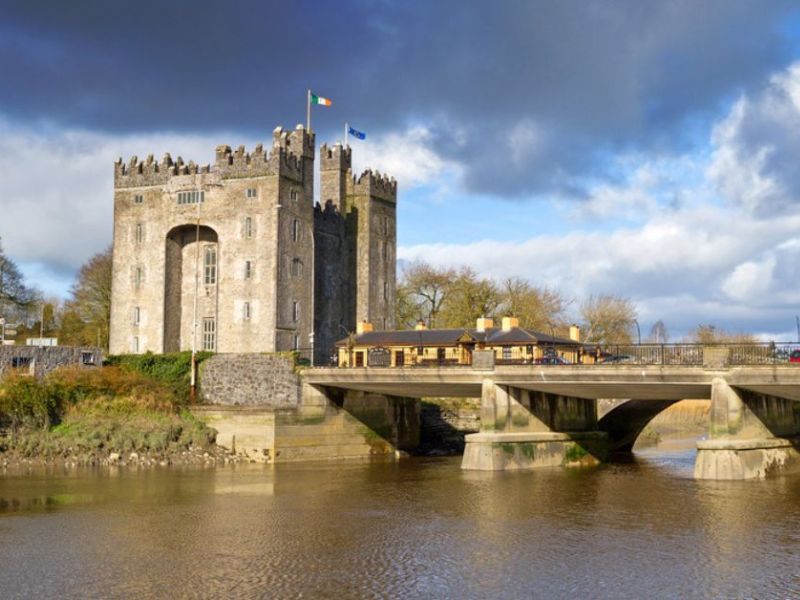
Bunratty Castle & Folk Park – A Better Alternative ✅
Not too far from Shannon Airport, in County Clare lies one of Ireland’s most accessible medieval castles, Bunratty Castle. It sits on the banks of the Owenogarney River, and is home to a large folk park which offers guests a full interactive experience.
This makes it far more desirable that Doonagore…
The folk park showcases Ireland’s rural heritage, period houses, and living history demonstrations. The castle itself has been restored in great detail and allows visitors to explore the grand halls, banquet rooms, and towers.
It’s a particularly great spot for those wanting to take part in a bit of Irish history as they offer a medieval banquet experience which is held in the evenings, where visitors can dine like royalty while being entertained by traditional Irish music and storytelling.
Bunratty also holds a fair deal of historical significance…
It dates back to 1425 with a rich history involving Viking settlements, Norman invasions, and several important Irish families, such as the O’Briens.
The site was originally a Viking trading camp in the 10th century before the Normans constructed a fortress here in the 13th century, recognising its strategic location along the Shannon Estuary.
The O’Briens, one of the most influential clans in Irish history, took control of Bunratty Castle in the 16th century. It became the seat of the powerful O’Brien family, rulers of Thomond, and a symbol of their dominance in the region. The castle saw many battles, sieges, and political struggles during its time, especially in the Tudor period when English forces sought to control the Irish clans.
Now a days, there is plenty to do from…
exploring the castle itself to the folk park, which recreates life in 19th-century Ireland with blacksmiths, weavers, and even traditional Irish cottages. The setting and location feels immersive, making it a perfect spot for a deep dive into Ireland’s history and culture.
2. Dublin Castle – Lacking Castle Vibes… ❌
Dublin Castle is another one may leave some visitors disappointed, located in the heart of Ireland’s capital. It no doubt has a important history, but the thing is the exterior really lacks the ‘traditional’ castle vibes that most may expect. Which evidentially can lead to quite an underwhelming experience.
Over time, the castle has been heavily modernised, stripping away much of the medieval settings you’d expect from a place like this.
Plus, with it being smack in the middle of Dublin means it’s always buzzing with tourists, making the experience feel a little rushed. If you’re hoping for that classic castle experience, you might be left disappointed.
However, I must admit, Dublin Castle is highly worth the visit for those wanting to grasp an insight into Ireland’s history…
Its history stretches back over 800 years, and it has played a major role in Ireland’s story, especially during British rule.
For anyone interested in history, it’s a great place to explore Ireland’s past. The State Apartments, where British leaders lived and Irish politicians now hold events, give you a sense of the power shifts over the years.
And what many people don’t realise is that Dublin Castle was built on the site of a Viking settlement. The Vikings first established a fort here in the 10th century, recognising the strategic importance of the location along the River Liffey.
When the Normans arrived in the 12th century, they built Dublin Castle as a way to establish control over the area, using the original Viking fort as part of their defenses.
The Record Tower is one of the last remaining parts of that medieval castle, and it stands as a reminder of Dublin’s early history.
So, while it may not feel like an old, crumbling castle, it still worth a visit if the castles history sparks your interest!
Need with your Ireland trip? Let me be your guide…
🙋♀️ Travel Consultation
Book a 40 minute Ireland Travel Planning call with Laura your local guide to discuss some insider tips for your Ireland vacation!
🇮🇪 Free Resources
Explore my free resources packed with insider tips and expert knowledge to help you plan your trip to Ireland!
😘 Say Thank You
Finding my content helpful? A small tip would mean the world to me. It helps me to continue making these free guides 💛
Or, Join my FREE Ireland Travel Planning Facebook Group to ask questions about your upcoming trip! I pop in once a week to answer as manny as possible 🇮🇪
Need HELP with your Ireland trip? Let me be your guide…
🙋♀️ Travel Consultation: Book a 40 minute Ireland Travel Planning call with Laura your local guide to discuss some insider tips for your Ireland vacation!
🇮🇪 Free Resources: Explore my free resources packed with insider tips and expert knowledge to help you plan your trip to Ireland!
😘 Say Thank You: Finding my content helpful? A small tip would mean the world to me. It helps me to continue making these free guides 💛
ℹ️ Join my FREE Ireland Travel Planning Facebook Group to ask questions about your upcoming trip! I pop in once a week to answer as many as possible 🇮🇪
Malahide Castle – A Better Alternative ✅
The good news is, for those looking for a more authentic Irish castle experience just north of the city lies Malahide Castle.
Here you will get to see a real medievil castle, which sits on 60 acres of peaceful parkland, making it a welcome escape from the hustle and bustle of the city.
The gardens are stunning, there’s a butterfly house, and you can even grab a coffee at the lovely café on the grounds. It’s the perfect spot for a relaxed and scenic day out.
The tours at Malahide Castle are engaging and informative, often led by knowledgeable guides who share entertaining stories about the Talbot family, who once lived there and their guests.
Visitors can explore both the interior and exterior at their own pace. The tours include access to the castle's grand rooms, beautifully decorated with antique furnishings, and you can also stroll through the stunning gardens, which feature a mix of historic and exotic plants.
Malahide Castle also boasts a pretty interesting history in terms of British Rule…
The Castle was originally built in the 12th century by Richard Talbot, who was granted lands by King Henry II of England after the Norman invasion of Ireland.
The Talbot family played a significant role in Irish history, and the castle remained in their possession for nearly 800 years, making it one of the oldest inhabited castles in Ireland.
The castle has witnessed many historical events, including the Battle of the Boyne in 1690, a key battle in the struggle between the Catholic King James II and the Protestant King William of Orange. The Talbots were staunch supporters of the Crown and had connections to various historical figures over the centuries.
In the 20th century, the castle faced challenges, particularly during the Irish Civil War, when it suffered damage. Despite this, it remained a family home until 1975 when the last Talbot resident, Lord Talbot de Malahide, donated it to the state. This gesture ensured that the castle could be preserved and opened to the public, allowing visitors to explore its rich history and stunning architecture.
But what is really interesting is it’s spooky past…
Malahide Castle is famous for its many ghost stories, each adding to its charm and mystery. Visitors often hear tales of spirits roaming the grounds, including Miss Maud Plunkett, whose tragic love story leaves a lasting impression.
Maud fell in love with a soldier, Lord Galtrim, who was either ambushed on his way to their wedding or killed shortly after they married. His ghost is said to wander the castle, groaning and pointing to the spear wound in his side, mourning the fact that Maud married his rival soon after his death.
Other ghostly residents include the Lord Chief Justice, who Maud married next but was known to have had a tumultuous relationship with, and Miles Corbett, a Regicide executed at the castle. There’s also Puck, the jester, who became a mischievous spirit after his tragic demise. The mysterious White Lady, depicted in a portrait in the Great Hall, is said to step out of her painting to roam the castle halls.
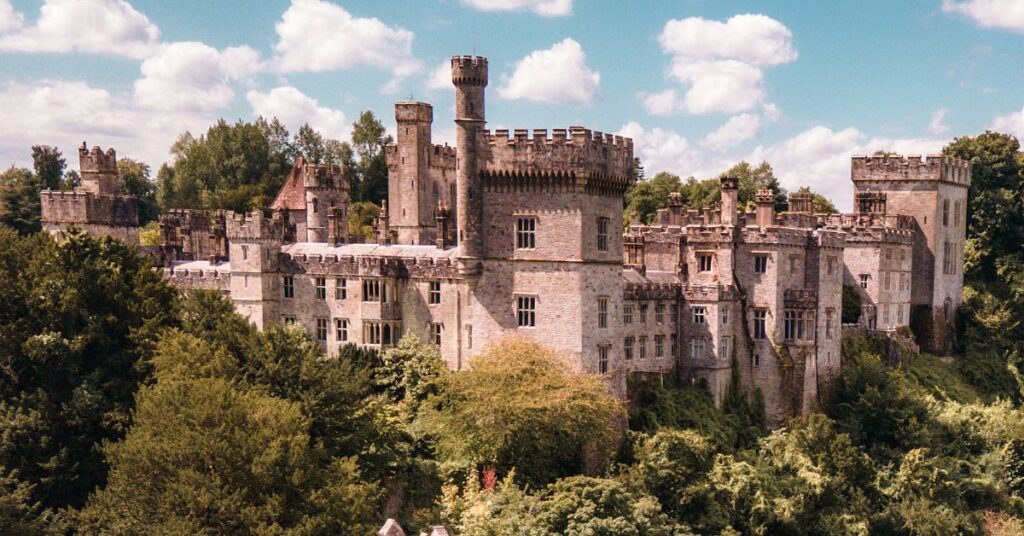
3. Lismore Castle – Pretty but… ❌
I must start this by saying I LOVE Lismore Castle, it looks like something you would expect to see in a Disney Movie. It’s located in a small town in County Waterford and the setting is truly beautiful.
The first time I came across it I was surprised as it looks quite ‘grand’ for Irish standards. Perhaps, it’s because it is fully restored, or due to the sheer size of it. Either way, I was extremely impressed.
However, while Lismore Castle is undeniably beautiful from the outside, it’s privately owned which means you can’t actually go inside it.
Visitors can only admire it from a distance, which leads to a somewhat disappointing experience for those hoping to explore the castle interiors. There is a gardens that you can tour for a fee, but personally I have never done it.
I also don’t find the history all too interesting…
It dates back to the 12th century when it was founded as a monastery before being converted into a castle by the Normans.
Over time, it passed through various hands, including Sir Walter Raleigh, who famously sold it to Richard Boyle, the 1st Earl of Cork.
The Boyle family significantly expanded the castle in the 17th century, and it was later remodelled into its current Gothic style in the 19th century by the Dukes of Devonshire.
But that’s pretty much it, no historic battles or significant historic events took place there.
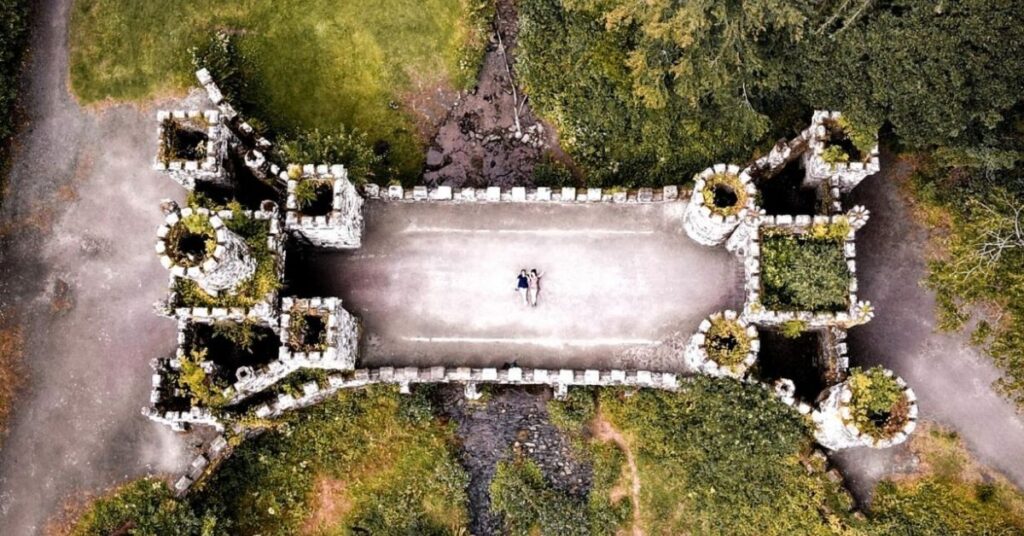
Ballysaggart Towers – A Better Alternative ✅
Also located in County Waterford (just a short drive from Lismore) is Ballysaggartmore referred to as “The Towers” by locals.
These ruins are one of my favourite hidden gems in the country. And times, you can have them completely to yourself. Thanks to their location, hidden away in a wooded area. Basically, you have to know about them to see them in the first place.
And the best thing of all is…
The towers are open to the public to explore as they please.There are a series of stone arches and gatehouses built in the 19th century as a grand entrance to the Ballysaggartmore estate, but the estate itself was never completed.
The site has a mysterious yet fairytale like feel to it as it sits abandoned in the forest, covered in moss and ivy.
It’s perfect for those looking to discover a hidden piece of Ireland’s history without the crowds or the commercialised experience that you typically find with famous castles.
History wise…well…
There isn’t much…the Towers were commissioned by a wealthy landowner, Arthur Keily-Ussher, in the 1830s as part of a plan to build an estate that would rival with Lismore Castle.
However, the project ran out of funds before the main house could be built, leaving only what we see today behind…
If you do plan to visit make sure to do the full loop as there are two structures and the second one many people often miss. Myself included when I first visited!
4. Classiebawn Castle – Look but don’t touch ❌
Perched dramatically on the coast of County Sligo, Classiebawn Castle is a Gothic Revival estate that offers stunning views of the Atlantic Ocean and the nearby Benbulben mountain.
However, much like many of the overhyped castles on this list, Classiebawn is privately owned and not open to the public, making it a classic “look but don’t touch” spot.
While the location and design are striking, visitors often feel disappointed when they realise they can only admire the castle from afar, whether from the roadside or a coastal hike.
However, with all that being said the castle is located on the Mullaghmore Looped drive which is one of the most underrated driving routes in the country. So, paying a visit to view the exterior may still be worth the effort if you plan on checking out Sligo’s many other beautiful landscapes.
As for the history…
It was built in the mid-19th century and was the home of Lord Mountbatten, a British royal and the last Viceroy of India.
He spent his summers there until his assassination in 1979 by the IRA during a boating trip off the coast of Sligo.
The castle's history is closely linked to Anglo-Irish relations, but without access to its interior or a detailed visitor experience, much of its story remains untold for the average tourist.
Sligo Abbey – A Better Alternative ✅
Also located in County Sligo is Sligo Abbey, it sits in the heart of Sligo Town and is a beautifully preserved medieval ruin that offers an up-close look at Ireland’s monastic history.
Unlike Classiebawn Castle, Sligo Abbey is fully accessible, allowing visitors to explore its ancient stone structures, including the 13th-century cloisters, the abbey church, and intricately carved tombs of local families.
The abbey’s compact size makes it easy to explore at a relaxed pace, and its central location means it pairs well with other sights in Sligo.
The abbey faced a lot of challenges throughout it’s history…
It was founded in 1253 by Maurice Fitzgerald, Lord of Offaly, Sligo Abbey was originally a Dominican friary.
It has survived multiple fires, invasions, and political changes, leaving its ruins remarkably well-preserved.
The abbey houses the only remaining medieval high altar in Ireland and several other important architectural and artistic treasures.
Making it a must visit for any history enthusiasts reading.
5. Blarney Castle – Very Touristic ❌
Ok, so before anyone comes for me for dishing Blarney Castle, I better start with a disclaimer. The is possibly one of the most iconic buildings in Ireland and the grounds are fantastic. And admittedly, I actually quite enjoy visiting them.
However…
It is super touristic, drawing thousands of visitors in each year to kiss the legendary Blarney Stone and receive the “gift of the gab.”
And honestly, Blarney Castle’s popularity can be both a blessing and a curse. While the castle’s grounds are undeniably beautiful, visiting can feel rushed and overwhelming and if I’m being honest a little bit commercialised, especially during peak tourist season.
The main attraction is kissing the Blarney Stone, but the queues can be incredibly long, and the actual experience of hanging upside down lasts a less than a minute.
Personally, I get the hype…but also there are much quieter castles that can visit without having to battle the crowds. Or, if you kissing the stone is not on your bucket list, I recommend spending time in the beautiful gardens. There is so much to see and do and most people miss them.
Also, the ‘gift of the gab’ concept is subject to Irish myths and legends like most things…
The Blarney Stone is a block of limestone that has become an iconic symbol of eloquence and charm.
Its exact origins are somewhat shrouded in mystery, but it is believed to have been brought to Blarney Castle from the Stone of Scone in Scotland by Cormac Laidir McCarthy, the castle’s builder, in the 15th century.
The Stone of Scone is historically significant, as it was used in the coronation of Scottish kings.
The legend surrounding the Blarney Stone states that kissing the stone will bestow the “gift of gab”—the ability to speak eloquently and persuasively.
The origins of this belief are uncertain, but some say it stems from a combination of local folklore and the fact that the stone has been associated with the smooth-talking MacCarthy family, who often used their eloquence to navigate political challenges.
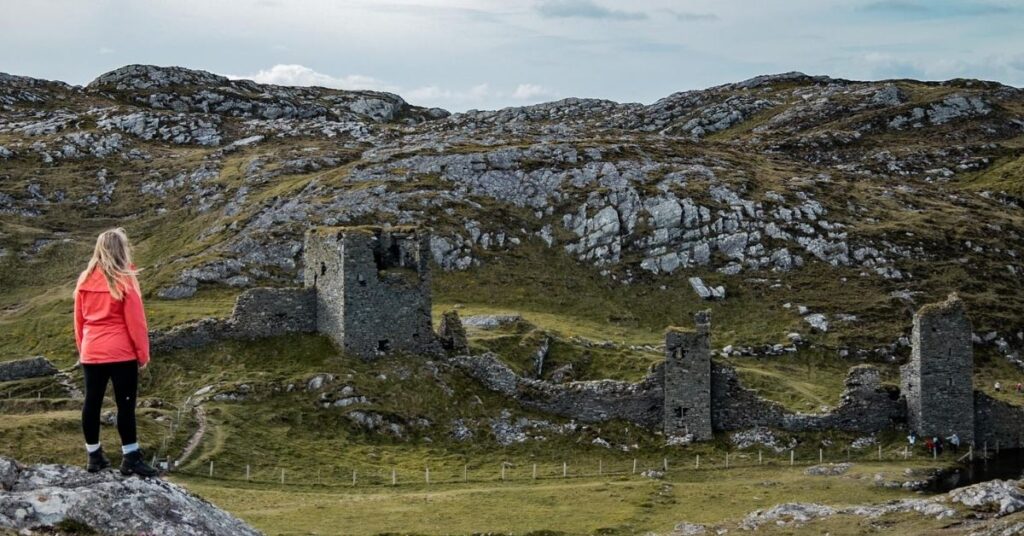
Three Castle Head – A Quite Alternative ✅
Another Castle in Cork that doesn’t receive nearly as much hype is Three Castle Head located on the remote Mizen Peninsula in West Cork. It offers breathtaking coastal views and a much more peaceful, secluded experience than Blarney Castle.
Three Castle Head is home to the ruins of Dunlough Castle, a 13th-century fortress that sits on the edge of a cliff overlooking the Atlantic Ocean.
The dramatic scenery alone is worth the visit, but the isolation of the site means you’ll likely have the place to yourself, unlike the crowded Blarney Castle.
However, there is no visitor experience here, and you also have to be comfortable with hiking on uneven and uphill land. So, this may determine which location is better suited to you.
The hike to the castle takes you through some of Ireland’s most rugged and unspoiled landscapes, making it a perfect destination for those seeking both history and adventure.
The Castle was placed in a strategic location for a reason…
It was built by the O’Mahony family in 1207 and consists of three towers connected by a stone curtain wall.
This strategic location provided a stronghold against invaders and a panoramic view of the surrounding area.
The castle played a role in local history and conflicts but has since fallen into ruins, allowing visitors to imagine its past while enjoying the stunning natural beauty.
Have a Ireland Travel Question?
Then join my FREE Facebook Community, I pop in once a week to answer as many queries as possible. Please do not email or DM. It is easier for me to manage everything in the one place 😊
👋 JOIN MY FREE IRELAND FACEBOOK COMMUNITY

🇮🇪🇮🇪🇮🇪
FREE IRELAND FACEBOOK COMMUNITY
✔️ LOCAL ADVICE
✔️ FREE ACCESS TO GOOGLE MAPS PINS
✔️ GROUP DISCUSSION


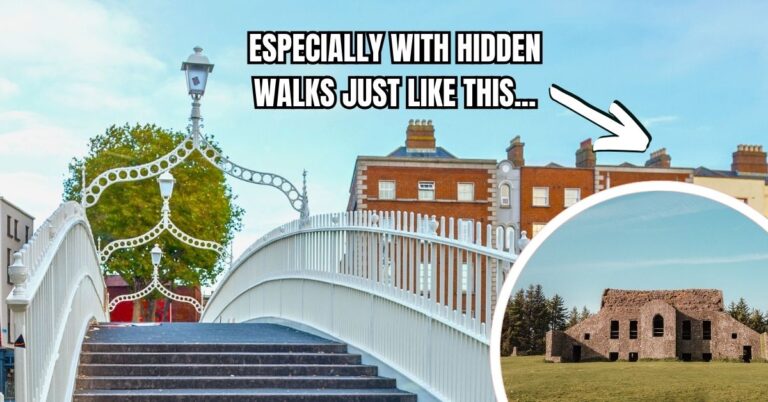
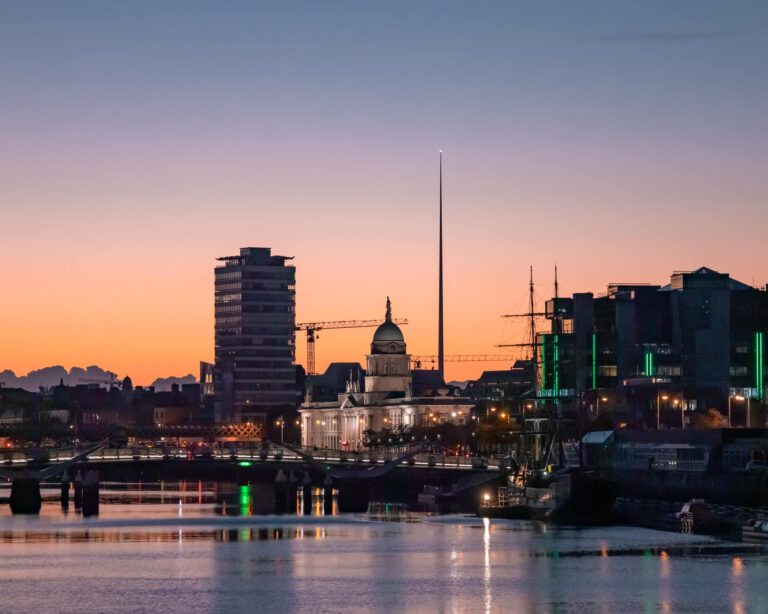
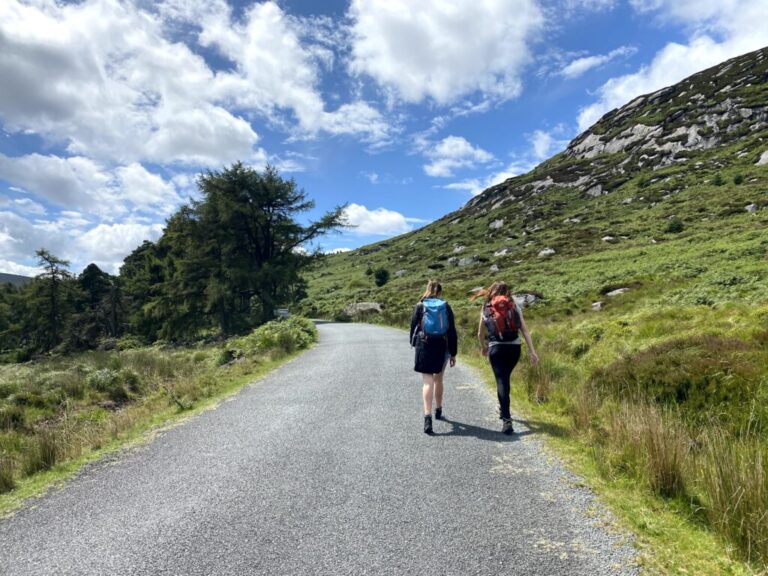
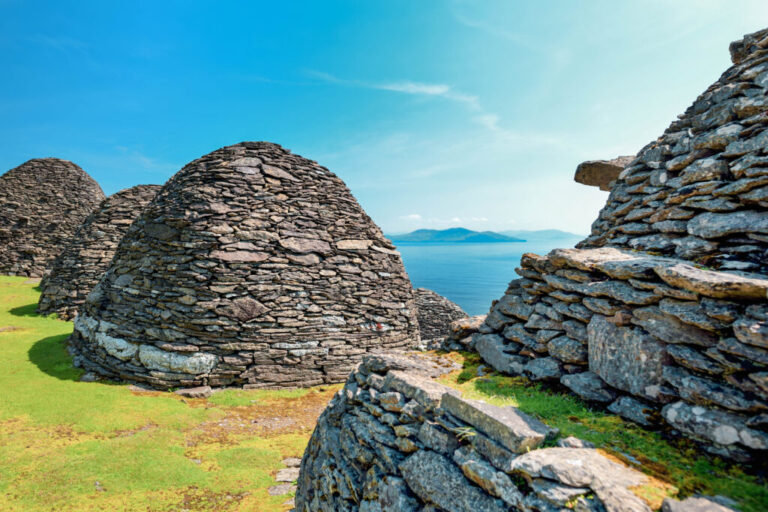
Facebook Comments